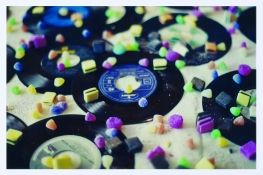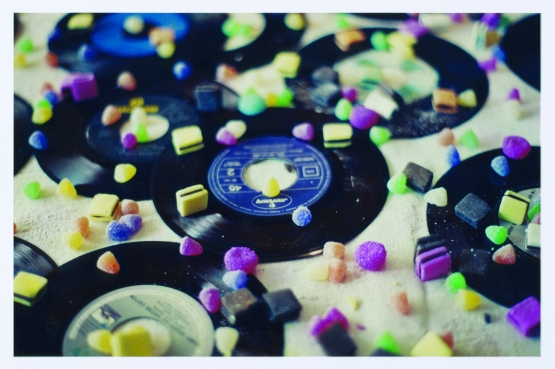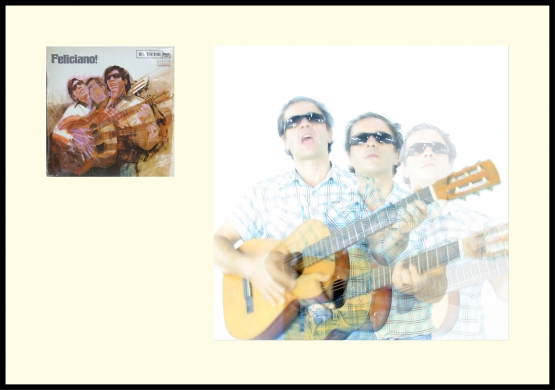This exhibition of works by artist and musician João Paulo Feliciano has been shaped around the sculpture Blues Quartet, 2004-2007, and explores the fusion of music and image. On show are seven works dating from different periods, from the early 1990s to the present, that tackle this recurrent concern in this artist’s production.
From João Paulo Feliciano’s earliest works, such as Sweet Music, 1992, also shown here, the title, functioning as a linguistic enunciation snatched from popular culture and often linked to musical contexts, is fully and ironically literalised in the elements constituting the image.
This is also the case with Blues Quartet. This scupture operates an essential link between Feliciano’s work as a musician and his work as an artist. While serving as a generic name for a hypothetical band, the title is materialised in the blue acrylic structure dividing the space above the table into four areas, where four lamps activated by sound-to-light modulators vary in intensity in accordance with the music. Music may be pre-recorded, on an iPod, to which the visitor has access, and where
the visitor then may choose between a wide variety of musical genres, or it may be a live performance, such as those of Rafael Toral, Lee Ranaldo, Trevor Tremaine and C. Spencer Yeah at the Contemporary Arts Center in Cincinnatti. The sculpture thus becomes a springboard of possibilities. The artist as creator can actually be switched off. In turn, the path taken by the variations and movements projected by the lamps in response to the music unfolds spatially in the reflections and filtered transparencies cast by the lamps, creating a full sense of dialogue between the elements of the quartet. The sculpture’s potentialities for different configurations are infinite, including its relation to silence.
The series of posters accompanying the sculpture was based on record covers where the words “blue” and “quartet” appear. These form classes of singular elements, but it is in their association to expressions and visual elements that the idea of Blues Quartet becomes at once generic and particular, as though the name, in naming something, were no more than the thing named by the name.
Pedro Lapa
Director












